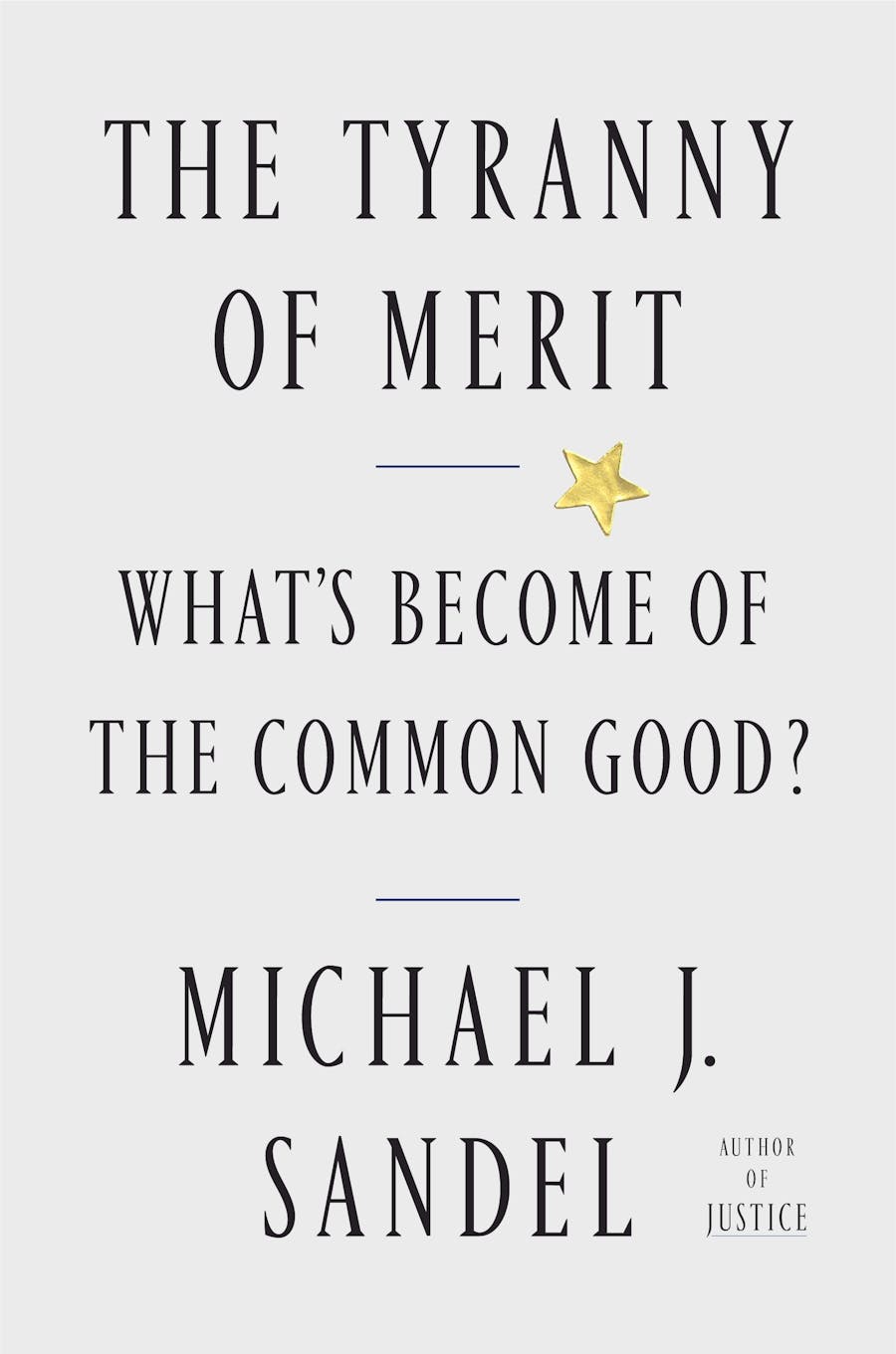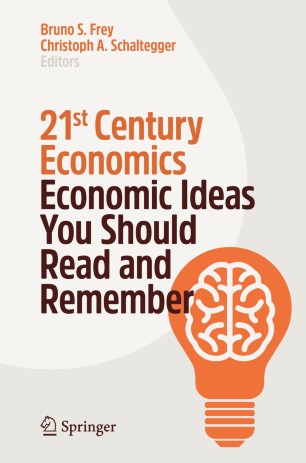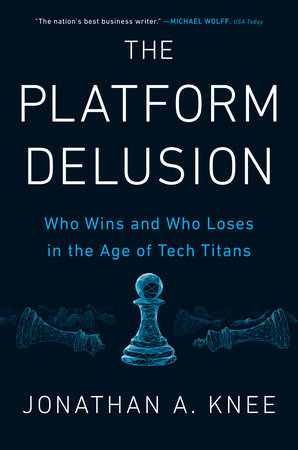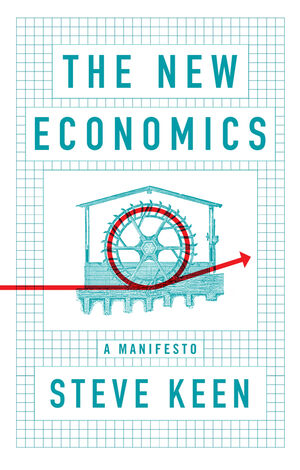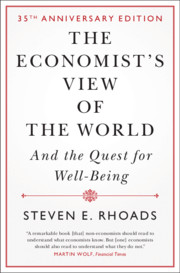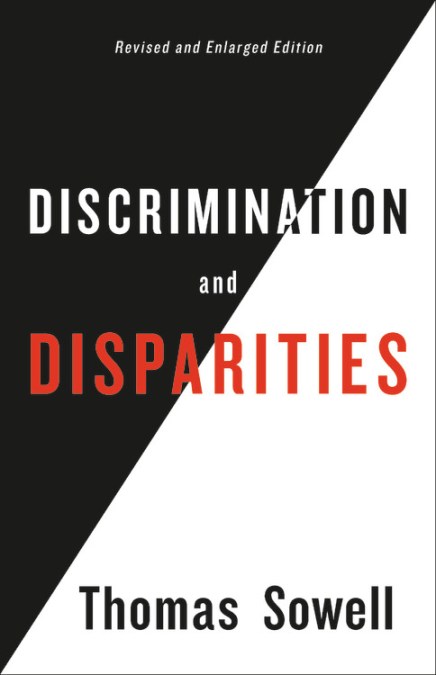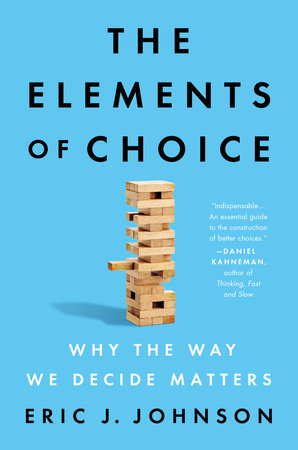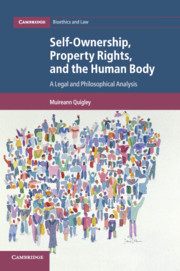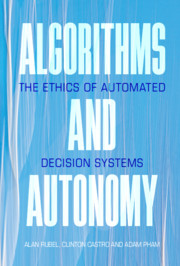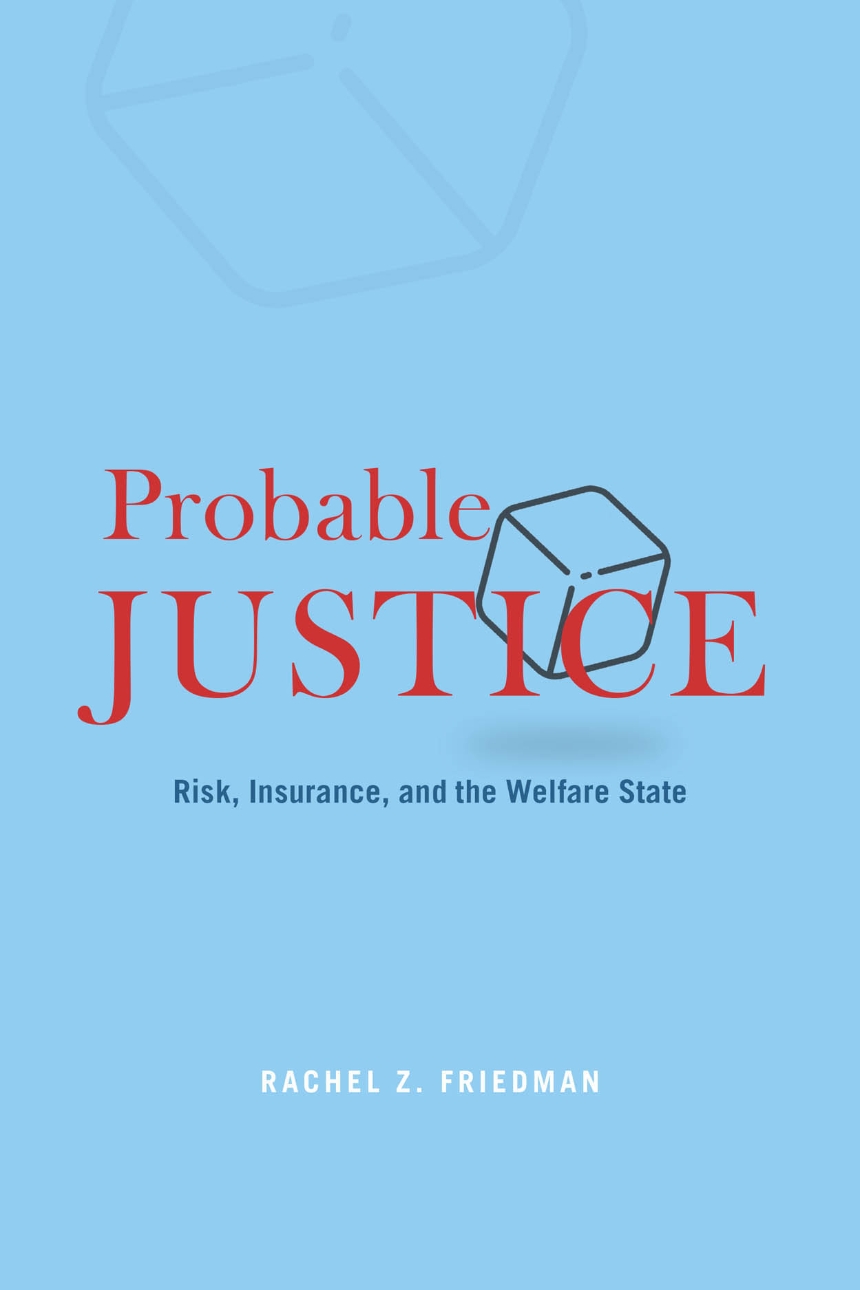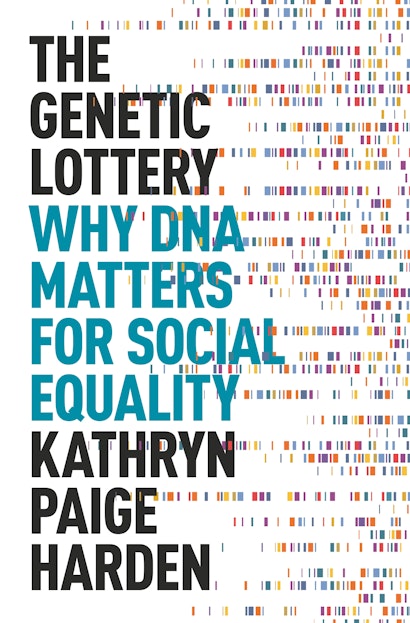The Tyranny of Merit. What's Become of the Common Good?
30 de desembre 2021
29 de desembre 2021
28 de desembre 2021
27 de desembre 2021
26 de desembre 2021
Behavioral Insights (2)
Key message,
Over the past ten years, there has been increasing interest in the idea of behavioral insights. However, at some point, this interest may start to end and attention may go elsewhere. Other ideas may come along, with their own compelling claims. People may stop deciding to “bring in” behavioral experts, as Rory was for autonomous vehicles. If this is true, then the immediate priority should be to integrate behavioral insights into the standard way that policy is made or organizations are run. That would mean that the practices are resilient to people no longer asking for “behavioral” solutions.
In fact, you could argue that this is the ultimate goal of the behavioral insights approach. The idea of a “behavioral” solution or approach should become meaningless, since the principles will have become absorbed into standard ways of working. Since, as we said in chapter 1, most policies or services concern behavior, then this is just about improving the way that central function is performed—it is not some kind of optional extra. Rather than talking about “behavioral public policy,” we would just refer to public policy (or corporate strategy) done better. In a sense, stopping talking about behavioral insights may actually be a sign that its true promise has been fulfilled. Until then, there is more to do.
The idea of a “behavioral” solution or approach should become meaningless, since the principles will have become absorbed into standard ways of working.
25 de desembre 2021
Risk-sharing agreements for drugs (3)
Characterization of the Pharmaceutical Risk‑Sharing Arrangement Process in Catalonia
Table 1
Uncertainty type, scope, and considered variables for drug assessment
| Uncertainty type | Uncertainty scope | Considered variables |
|---|---|---|
| Clinical | Efficacy, effectiveness, and safety | Time frame |
| Clinical trial phase | ||
| Patient characteristics | ||
| Primary endpoint | ||
| Surrogate endpoints | ||
| Active comparator | ||
| Sensitivity analysis | ||
| Statistical analysis | ||
| Patient subgroup analyses | ||
| Time frames for treatment follow-up | ||
| Financial | BI and CE | Indication extension and concretion |
| Treatment regimen | ||
| Potentially replaceable treatments | ||
| Net financial impact of treatment inclusion/replacement | ||
| Potential use extensions | ||
| Other modifications in use of resources linked to new treatment | ||
| Availability of CE or CU studies |
Adapted from [14]
24 de desembre 2021
23 de desembre 2021
20 de desembre 2021
Sick individuals and sick populations
Sick individuals and sick populations
Individus malalts i poblacions malaltes
Una crítica de l’estratègia poblacional de Geoffrey Rose en la medicina preventiva
Rose's Strategy of Preventive Medicine
És part integral de la bona medicina preguntar no tan sols “Quin és el diagnòstic i quin és el tractament?” sinó també “Per què ha succeït això?” i “Es podia haver previngut?”. Aquesta manera de pensar és la que orienta pràcticament tota la recerca clínica i de laboratori sobre les causes i els mecanismes de la malaltia.
Geoffrey Rose
17 de desembre 2021
16 de desembre 2021
15 de desembre 2021
The economist's view
The Economist’s View of the World And the Quest for Well-Being
Table of Contents
Introduction
Part I. Useful Concepts:
1. Opportunity Cost
2. Marginalism
3. Economic Incentives
Part II. Government and Markets, Efficiency and Equity:
4. Government and the Economy
5. Economists and Equity
6. Externalities and the Government Agenda
Part III. The Limits of Economics:
7. The Economist's Consumer and Individual Well-Being
8. Representatives, Deliberation, and Political Leadership
9. Conclusion.
14 de desembre 2021
The five essential healthcare suppliers
Taking access to the next level: mobilising five essential healthcare sectors
There are five groups that are crucial: Big Pharma, generic medicine manufacturers, vaccine manufacturers, diagnostics companies and medical gas companies.
In all cases, there are a few dominant players that have a big impact on healthcare
13 de desembre 2021
12 de desembre 2021
The value of direct-to-consumer tests
Direct-to-Consumer Tests on the Market Today. Identifying Valuable Tests from Those with Limited Utility
For health care professionals, the analytical validity of DTC tests is a primary concern. Analytical validity of DTC genetic testing can be defined by analytical sensitivity and specificity whereby analytical sensitivity is defined as how often a test is positive when the genetic variant of interest is present in the tested sample, and the analytical specificity is defined as how often a test result is negative when the tested sample does not contain the genetic variant of interest.18 A recent study by Tandy-Connor and colleagues19 “indicated that 40% of variants in a variety of genes reported in DTC raw data were false positives” when compared with clinical confirmatory testing. This study highlights the need to scrutinize the analytical validity of DTC genetic testing and consider confirmatory testing in a clinical diagnostic genetics laboratory.
Per the American Society of Human Genetics, “companies offering DTC genetic testing should disclose the sensitivity, specificity and predictive value of the test, and the populations for the information is known, in a readily understandable and accessible fashion.”
Unfortunately, nobody cares about it, and the regulator is still on vacation.
11 de desembre 2021
Intellectual property rights and wrongs
COMUNICACIÓN DE LA COMISIÓN AL PARLAMENTO EUROPEO, AL
CONSEJO, AL COMITÉ ECONÓMICO Y SOCIAL EUROPEO Y AL COMITÉ DE
LAS REGIONES. Aprovechar al máximo el potencial innovador de la UE:
un plan de acción en materia de propiedad intelectual e industrial para apoyar la
10 de desembre 2021
The pandemic's true death toll
09 de desembre 2021
07 de desembre 2021
Fallacies, differences and discrimination
Discrimination and Disparities
Economic and other outcomes differ vastly among individuals, groups, and nations. Many explanations have been offered for the differences. Some believe that those with less fortunate outcomes are victims of genetics. Others believe that those who are less fortunate are victims of the more fortunate.
Discrimination and Disparities gathers a wide array of empirical evidence to challenge the idea that different economic outcomes can be explained by any one factor, be it discrimination, exploitation, or genetics. This revised and enlarged edition also analyzes the human consequences of the prevailing social vision of these disparities and the policies based on that vision--from educational disasters to widespread crime and violence.
This edition takes on other widespread fallacies, including a non sequitur underlying the prevailing social vision of our time—namely, that if individual economic benefits are not due solely to individual merit, there is justification for having politicians redistribute those benefits.
Each fallacy seems plausible on the surface, but that is what makes it worthwhile to scrutinize both their premises and the underlying facts. Many other new issues are addressed in this edition—in an international context, as in the first edition—but these two fallacies seem to be at the heart of much, if not most, of the prevailing social vision, sometimes summarized as “social justice.”
05 de desembre 2021
Soft budget constraint
Understanding the Soft Budget Constraint
The ‘softening’ of the budget constraint appears when the strict relationship between the expenditure and the earnings of an economic unit (firm, household, etc.) has been relaxed, because excess expenditure will be paid by some other institution, typically be the paternalistic State. The higher the subjective probability that excess expenditure will be covered by external assistance, the softer the budget constraint. The main focus of the paper is on the firm. There are several ways of ‘softening’ the budget constraint: subsidies, tax-exemptions, soft credits and so on. The softness weakens price responsiveness, leads to losses in efficiency and under certain conditions may generate excess demand. The paper examines the ‘soft budget constraint’ syndrome in Hungary, Yugoslavia, and China, i.e. in the economies pioneering in the introduction of market-oriented decentralization reforms. Socialist economies exhibit a rather extreme degree of this phenomenon, which to a lesser degree can be observed in mixed economies as well.
Janos Kornai coined the term "soft budget constraint" and it remains as a nowadays concept. Now that Janos passed away it is a good moment to remember its impact, also in health policy.
03 de desembre 2021
01 de desembre 2021
Bioethics for lab medicine
Ethics for Laboratory Medicine
Key issues:
Table 1.Ethical Issues of particular importance in Laboratory medicine.
Informed consent
Use of leftover specimens
Biobanking
Genetic testing
Equity and access to laboratory testing
Incidental findings and medically actionable results
DTC testing
Transfusion medicine and religious or ethical restrictions
Disclosing medical error
Emerging infectious diseases
Test utilization
The unique role of laboratorians, who care for patients but interact mainly with their samples rather than the person, creates distinct ethical dilemmas. In addition, laboratories function as critical parts of complex health systems, and the interaction of the laboratory with the greater healthcare system creates additional points of ethical friction (45). Clinical laboratory professionals are ethically bound to use our voices to advocate for excellence in patient care in the realms of respect for persons, beneficence, and justice, even in the face of technological, administrative, and, perhaps, clinical pressures to do otherwise.
Ethics represents moral principles based on cultural norms and values. Sometimes these moral values have been turned into federal or state laws or into local rules and regulations. However, laws and rules may be absent or difficult to apply to a given situation. When faced with ethical decisions, laboratorians should seek the input from other clinicians and laboratory colleagues. In addition, most hospitals have ethics boards comprising multidisciplinary teams of clinicians, lay people, and clergy to help guide decision-making.
27 de novembre 2021
Choosing how to choose (2)
The elements of choice: why the way we decide matters
A book on choice architecture. In the last chapter:
Having looked, throughout this book and in this chapter, at choice architecture, both good and bad, there are three things that we should consider going forward:
Choosers are unaware of the effects of choice architecture and do not respond to warning.
Designers can underestimate the effects of choice architecture.
Choice architecture has a larger effect on the most vulnerable.
If these three statements are true, what should we do? One place to start is educating designers and choosers. The education I have in mind is not just pointing out choice architecture and its effects, but also providing an understanding how it works.
26 de novembre 2021
Mental health challenges
From Awareness to Change in Integrated Mental Health, Skills and Work Policies
1 What does a mental health-in-all-policies approach look like?
2 What are current social and labour market outcomes for persons with mental health conditions?
3 How far have we come in implementing integrated mental health, skills and work policies?
4 What are the implications and lessons of the COVID-19 pandemic for integrated mental health, skills and work policy?
A timely OECD report 5 years after the approval of the Recommendation on Integrated Mental Health, Skills and Work Policy. Unfortunately many countries still have to apply them...
25 de novembre 2021
AI everywhere (8)
A useful introductory book with this contents:
1 What Is a Virtual Assistant?
2 AI and Machine Learning
3 Speech Recognition
4 Natural Language Understanding
5 Natural Language and Speech Generation
6 The Dialog Manager
7 Interacting with an Assistant
8 Conclusions
24 de novembre 2021
The urgent answer to the coming black box medicine
Black box medicine and transparency
The series of reports Black Box Medicine and Transparency examines the human interpretability of machine learning in healthcare and research:
1. Machine learning landscape considers the broad question of where machine learning is being (and will be) used in healthcare and research for health
2. Interpretable machine learning outlines how machine learning can be or may be rendered human interpretable
3. Ethics of transparency and explanation asks why machine learning should be made transparent or be explained, drawing upon the many lessons that the philosophical literature provides
4. Regulating transparency considers if (and to what extent) does the General Data Protection Regulation (GDPR) require machine learning in the context of healthcare and research to be transparent, human interpretable, or explainable
5. Interpretability by design framework distils the findings of the previous reports, providing a framework to think through human interpretability of machine learning in the context of healthcare and health research
6. Roundtables and interviews summarises the three roundtables and eleven interviews that provided the qualitative underpinning of preceding reports
Each report interlocks, building on the conclusions of preceding reports.
Meanwhile you can start with the executive summary. Does anybody care about it?
23 de novembre 2021
Payment systems during the pandemic
Key messages:
•Públic payers assumed most of the COVID-19-related financial risk.
•Income loss was not a problem when providers were paid by salary, capitation or budgets.
•Providers paid based on activity were compensated through budgets or higher fees.
•New FFS payments were introduced to incentivize remote services.
•Payments for COVID-19 related costs included new fees, per-diem and DRG tariffs.
22 de novembre 2021
Beyond supply and demand economics
What Students Learn in Economics 101: Time for a Change
On the need for a new perspective in economics education:
The question thus arises: how do we want students to use the supply and demand apparatus when there may be excess demand or supply in equilibrium—as in the labor or credit markets when lending and hiring is analyzed using a principal–agent model? A Bowles and Carlin: What Students Learn in Economics 101 related question arises in other markets if the out- of-equilibrium rent- seeking behavior of firms and individuals generates significant excursions away from the intersection of the supply and demand curves determined by economic fundamentals.
Our response is that in many settings “where the supply and demand curves cross” is not the correct answer. Importantly, this does not amount to an abrogation of the “laws of supply and demand” or a reduction in their force. It requires instead that we break away from the benchmark of the intersection of the two curves, either because that intersection may not exist, or may not be where the market is heading as occurs, for example, during a bubble.
I absolutely agree.
21 de novembre 2021
The Dahlgren and Whitehead model 30 years after
The Dahlgren-Whitehead model of health determinants: 30 years on and still chasing rainbows
From the authors review:
Reflection on the past 30 years has helped us identify where to go from here, to develop the model so that it is adapted to the burning issues of the day. First, we need to find ways to better illustrate the vertical links between the social, economic and cultural determinants of health and those of lifestyle. This is needed to reinforce the point that many lifestyles are structurally determined. There is a common, flawed assumption that the lifestyles of different socio-economic groups are freely chosen, ignoring the reality that lifestyles are shaped in important ways by the social and economic environments in which people live.
Second, there is a current debate about the importance of the commercial determinants of health and whether they have been neglected by the public health community, including a critique of these not being given sufficient prominence in the Dahlgren and Whitehead model (Maani et al., 202015). By ‘commercial determinants’, Maani and colleagues refer to factors that adversely influence health, which stems from the profit motive; the examples they give concentrate on the strategies of tobacco, alcohol and food and beverage producers to promote their products. While we acknowledge that the impact of commercial interests should always be analysed, we deliberately do not define ‘commercial interests’ as a determinant in its own right to be included in the rainbow model. In a rebuttal to Maani and colleagues, we explain how we consider profit-driven commercial interests as ‘driving forces’ that are related to almost all determinants of health except genetic factors.
20 de novembre 2021
This did not have to be a global pandemic
spike. THE VIRUS vs THE PEOPLE THE INSIDE STORY
The title of chapter 9 of this book is: "This did not have to be a global pandemic".
And says,
WHAT IF THE TAPE had run differently? What if those six miners who developed pneumonia after clearing droppings from bat caves in southern China† had been properly investigated? Imagine what could have happened if doctors had traced their infections back to a novel SARS-related corona-virus most commonly seen in bats. What if there had been a global system not only to pick that up, but also to raise an alert that humanity had no immunity against the virus, to immediately share virus samples globally with scientists and to trigger research into putative vaccines and treatments?
None of this is easy: it is a struggle to identify clusters and unmask a completely new pathogen at work. But, equally, none of it is beyond the capability of science.
This is what we desperately need: surveillance in the shadowlands where humans and animals overlap, and specifically when those exchanges are leading to illness. We need to be asking: which viruses in wild and domestic animals are crossing back and forth between humans and animals? How can we spot these perilous cross-species breaches and how should we respond?
The pathogens that keep me awake at night are those against which humanity is defenceless. So, in the next five years, we need to document these gaps in the global human immune landscape. For a decade now, I have been wondering whether seasonal influenza, or winter flu, may not be the viral enemy we think it is, because the world has a degree of protection against many of the strains in the flu family.
A crucial book to understand the origins of the pandemic and what should be done for the next one.
19 de novembre 2021
18 de novembre 2021
Against body commercialism (2)
Banking on the Body: The Market in Blood, Milk, and Sperm in Modern America
Kara Swanson traces the history of body banks from the nineteenth-century experiments that discovered therapeutic uses for body products to twenty-first-century websites that facilitate a thriving global exchange.
El llibre "Banking on the Body: The Market in Blood, Milk, and Sperm in Modern America" de Kara W. Swanson explora detalladament la història de la mercantilització dels fluids corporals humans als Estats Units moderns [referència a tot el text]. Swanson argumenta que la dicotomia tradicional entre "regal" i "mercaderia" és imprecisa i limitant per entendre les complexes dinàmiques d'intercanvi que involucren sang, llet materna i esperma. Aquesta dicotomia dificulta apreciar els aspectes superposats de venda i donació presents en molts intercanvis i assumeix una separació completa entre els interessos privats i l'interès públic en la distribució d'aquests productes corporals.
El llibre analitza com la metàfora del "banc" ha influït en la discussió pública sobre aquests productes corporals. Per exemple, la prohibició de la compensació per la donació d'òrgans a la National Organ Transplant Act es basa en la idea que els interessos privats i públics són necessàriament oposats, i que els tractaments mèdics vitals haurien d'anar als més malalts i no als més rics. No obstant això, l'autora il·lustra com organitzacions com moremarrowdonors.org intentaven crear un intercanvi on els incentius privats podien coexistir i fins i tot promoure l'interès públic en l'assignació de productes corporals, augmentant l'accés a teràpies que salven vides per a grups socioeconòmicament desavantatjats.
Swanson dedica una part important del llibre a la història dels bancs de sang. Explora els orígens d'aquesta pràctica, començant amb els intents de Bernard Fantus a l'Hospital del Comtat de Cook de Chicago, que va publicar un article titulat "Cook County's Blood Bank". Fantus va treballar per augmentar l'accés a la sang per a transfusions. El llibre examina la transició de la donació remunerada a la donació voluntària durant la Segona Guerra Mundial, impulsada pel patriotisme. També es discuteix la segregació racial de la sang que van practicar alguns bancs, com el del Johns Hopkins Hospital, que separava la sang per evitar controvèrsia, tot i que no hi havia objeccions biològiques o fisiològiques vàlides. En contrast, el Irwin Memorial Blood Bank de San Francisco no separava la sang per raça. El llibre també aborda la importància de la informació detallada del donant per garantir la seguretat de la sang emmagatzemada.
La història dels bancs de llet materna és un altre focus important del llibre. Swanson examina els esforços inicials per organitzar el subministrament de llet materna, com el Directory for Wet Nurses creat per Talbot a Boston el 1910. Aquest directori era una oficina que posava en contacte mares lactants que buscaven feina amb empleadors, cobrant una petita tarifa. Talbot fins i tot va establir una casa on les dones podien viure amb els seus nadons mentre esperaven ser contractades. Aquestes cases també funcionaven com a llocs de disciplina on es monitorava la dieta, la vestimenta i el comportament de les futures dides, i se les examinava per malalties. El llibre descriu la transició gradual de les dides als bancs de llet materna, influenciada per factors com la professionalització de la medicina i la demanda de llet humana per a nadons prematurs [vegeu notes relacionades amb l'evolució de la llet materna]. Swanson també explora el paper de les organitzacions de dones, com la Junior League, en l'establiment i el suport dels bancs de llet materna. El llibre examina l'evolució de les directrius dels bancs de llet, incloent la importància de la història detallada de cada donant i el debat sobre la llet fresca versus la congelada. Finalment, el llibre considera l'aparició de bancs de llet amb ànim de lucre com Prolacta.
La tercera part del llibre se centra en la història dels bancs d'esperma i la inseminació artificial. Swanson traça l'evolució d'aquesta pràctica des dels seus inicis fins a la creació de bancs d'esperma comercials com Idant i Chartered International Cryobank. Aquests bancs oferien serveis com l'emmagatzematge d'esperma abans de la vasectomia. El llibre també examina la influència de l'eugenèsia en els primers bancs d'esperma, com el Repository for Germinal Choice, que tenia l'objectiu explícit de promoure la reproducció utilitzant esperma d'homes "d'elit". La transició cap a les vendes directes als pacients es discuteix, així com la creixent demanda per part de les dones de tenir més control sobre la selecció del donant. El llibre també aborda les qüestions legals i ètiques relacionades amb la inseminació artificial i la paternitat [vegeu notes sobre aspectes legals].
En conclusió, "Banking on the Body" ofereix una anàlisi exhaustiva de la història del mercat de fluids corporals als Estats Units. L'autora demostra com la dicotomia entre regal i mercaderia és insuficient per comprendre les motivacions i les conseqüències d'aquests intercanvis. El llibre revela la complexa interacció entre interessos privats, interès públic, avenços mèdics i canvis socials que han donat forma a aquest mercat en evolució constant. Swanson destaca com les "banques" de sang, llet i esperma no només han facilitat l'accés a recursos mèdics importants, sinó que també han plantejat qüestions ètiques i socials fonamentals sobre la propietat del cos i la distribució de substàncies vitals [referència a conclusions generals del llibre].
17 de novembre 2021
15 de novembre 2021
11 de novembre 2021
10 de novembre 2021
Nudging and public policy
Psychology and Behavioral Economics. Applications for Public Policy
This is a textbook on applied behavioral economics for public policy issues. In chapter 5 you'll find the health section and this is the summary:
Where people live, what they eat, how careful they are about taking their medications, and even what they do in their spare time are very much related to the quality of their lives and their health-related outcomes. While our genetic makeup accounts for a signifcant portion of our health outcomes, we know that health is also heavily infuenced by what are known as social determinants: education, wealth, neighborhood safety, housing, and health literacy, among many others. Throughout the day, we face many decisions that have a direct or indirect impact on our health and quality of life. Many of these choices can be infuenced toward healthier options by behavioral interventions.
This chapter presents behavioral insights and interventions that have a high potential to impact the health of community members, reduce disparities, and improve their overall quality of life. These insights and interventions range from increased medical adherence to improved nutritional choices using nudges, regulations, provision of information, or rewards for positive behaviors
09 de novembre 2021
Choosing how to choose
Making Better Choices: Design, Decisions, and Democracy
Making Better Choices is about how we make decisions together and the tools we use to get to those decisions. We make joint decisions out of necessity because the choices we make affect each other. Each decision we take has a consequence. This book reinforces why we need better systems design and analyses given the consequences of our decisions. It is also about carefully thinking about the values of the choices we make, whether they occur in a small meeting of individuals in a local association or community or in a national election. It will illuminate the differences between sincere behavior and strategic behavior to defeat an opponent in voting, the latter being quite common. The book will also review different voting systems, what their original intents were, and what their deficits are. In trying to bring all these topics together and more, the authors realized that the book is in essence an outcome of the arranged marriage between social choice and systems engineering that they conducted. The more one begins to explore the aspects of social choice and systems engineering, the more one realizes how much they have in common, and how much more they can offer if they are unified.
Charles E. Phelps is one of the authors of this book. He departs from health economics and enters into social choice. Great book. In the epilogue:
We live in a world with the consequences of pretending that complex systems have binary answers. Having open discussions on these complexities is sometimes difficult, perhaps even painful. But awkwardness and pain on such issues merely represent hidden problems that inhibit our collective progress. Ignoring them or stifling discussion about them will not make them go away.
In Making Better Choices we have seen how the ways we choose affect how organizations make decisions. Two major branches of human thought have approached this issue, but from wholly distinct directions. Systems engineering has created a repertoire of ways for product and service design with performance improvement and new insights as defining features. However, systems engineering seldom deals with the question of how to do this in the context of a group of individuals acting as the decision-maker. A traditional systems engineering approach develops requirements of a desired, even acceptable, solution to the problem but doesn’t necessarily consider where those come from. This is the realm of social choice.
08 de novembre 2021
AI everywhere (7)
Topics of the book:
How Much and What Kind of Artificial Intelligence Can Humans Bear?
“Do You Know How It Was?”: The History of AI
How Does AI Function?: AI Techniques
How Is AI Being Realized?: AI Determines Our Lives
Are You Still Buying or Are You Already “Influencing”?: Trade 4.0
Where to Go with the “Social Fallow”?: Industry 4.0
How Is Our Togetherness Changing?: Social Implications of AI
Paradise Times or the End of the World?: The Future with AI
07 de novembre 2021
Ethics of algorithms: the autonomy perspective
Algorithms and Autonomy. The Ethics of Automated Decision Systems
This is a reference book on the key topics of ethics of artificial intelligence. Selected statements from the last chapter of this open access book:
We have argued that three broad facets of autonomy are affected by algorithmic systems. First, algorithmic systems are relevant to what we owe each other as autonomous agents. That is the focus of Chapters 3 and 4. In Chapter 3 we addressed the material conditions that we owe others and argued that respecting people as autonomous demands that any algorithmic system they are subjected to must be one that they can reasonably endorse. It does not require that they value particular outcomes or that they not bemade worse off by such systems. Rather, systemsmust either comport with agents’ own ends or be consistent with fair terms of social cooperation.We argued that persons being able to reasonably endorse a system turns on the system’s reliability, responsibility, stakes, and relative burden. Chapter 4 turned to the issues of what information we owe others. There we argued that people are owed information as a function of their practical agency (i.e., their ability to act and carry out plans in accord with their values) and as a function of their cognitive agency (i.e., their ability to exercise evaluative control over mental states, including beliefs, desires, and reactive responses). We offered several principles for information access grounded in agency. The second connection between algorithmic systems and autonomy is ensuring the conditions under which people are autonomous.
In Chapter 5 we considered the relationship between algorithmic systems and freedom.We explained that algorithms bear upon negative, positive, and republican freedomand offered a general account of freedom as ecological non-domination. Key to understanding that ecology is recognizing three key challenges to freedom: affective challenges, deliberative challenges, and social challenges. In Chapter 6 we offered some suggestions for addressing some facets of those challenges. Specifically, we argue that a kind of epistemic paternalismis both permissible and (under some conditions) obligatory. Chapters 7 and 8 shift focus to the responsibilities of agents in light of the fact that they are autonomous. In Chapter 7 we argue that algorithmic systems allow agents deploying such systems to undermine a key component of responsibility, viz., providing an account for actions for which they are responsible. Specifically, we argue that complex systems create an opportunity for “agency laundering,” which involves a failure to meet one’s moral responsibility for an outcome by attributing causal responsibility to another person, group, process, or technology. Chapter 8 addresses a different facet of responsibility. Citizens within democratic states have a responsibility to exercise their autonomy in order to legitimate political authority. That is, they have a responsibility to help ensure that governments, laws, policies, and practices are justifiable. However, some kinds of algorithmic systems hinder citizens’ abilities to do that. They can do so by undermining the epistemic conditions necessary to underwrite the “normative authority” path to legitimacy or by undermining the exercise of autonomy necessary to underwrite the “democratic will” path to legitimacy.
06 de novembre 2021
A must read health policy textbook
Understanding Health Policy: A Clinical Approach
If somebody asks me about a health policy textbook for students, I would say inevitably this one. Now in its 8th edition has updated many issues. Unfortunately we don't have a similar text with an european perspective. Many politicians and MP should read it to change their biased minds on health policy issues. The debate would improve notoriously.
05 de novembre 2021
AI everywhere (6)
Intel·ligència artificial, ètica i societat
Artificial Intelligence, Ethics and Society
Index
Foreword
Introduction
1st PART – An overview through the specialised literature
.1.1. What do we mean by artificial intelligence (IA)?
1.2. What do we mean by the ethics of IA?
1.3. The main ethical principles of AI
1.4. Why the emergence of ethical AI?
1.5. What are the main risks of AI?
1.6. The social perception of AI
1.7. What is the institutional response?
1.8. What is the business response?
1.9. How to move towards ethical AI?
1.10. A proposal for a regulatory framework of AI in the EU
1.11. By way of conclusion to the first part
2nd PART – An overview through expert opinions
2.1. Collecting and analysing qualitative information domain
2.2.1. Ethical considerations of AI: restriction, sub-objective or main objective?
2.2.2. AI as a factor in human debilitation
2.2.3. AI as a factor of human empowerment
2.2.4. The context of ethical considerations in AI
2.2.5. The impact of AI on younger generations
2.3. Legal domain
2.3.1. The geopolitics of AI
2.3.2. AI governance
2.3.3. The regulation of AI
2.3.4. The social justice of AI.
2.3.5.Transparency in AI
2.4. The future outlook
2.4.1. The main ethical and social challenges in the long term
2.4.2. The balance of opportunities and risks of AI in the future
2.5. By way of conclusion to the second part
03 de novembre 2021
The welfare state as a social insurance mechanism
Probable Justice. Risk, Insurance, and the Welfare State
This book is a review of the role of social insurance, from mutual insurance to the development of current welfare policies. Too often we forget that we have our public coverage of risk as the efficient solution for an intractable issue at individual level.
Key take-aways from last chapter:
I have advanced three principal claims about probability theory and its relationship to welfare thinking. The first is that mathematical probability is frequently, if not inherently, normative in its character. We saw that the very project of quantifying probabilities grew out of a moral and legal question, namely the need to apportion fair shares in an interrupted game of chance. Each subsequent account of probability has in turn both reflected and furthered the practical aims of its exponents. This should not be surprising, given that the discipline is at its core an attempt to guide good judgment and quantify equality, both of which are normative efforts, closely linked to views about the ends of human action and justice broadly understood.
The second claim, which follows from the first, is that theorists of mathematical probability have long tried to reconcile individual choice with some account of the common good. Not long after the founding of the discipline, probabilists began to recognize a potential disconnect between personal prudence, or common sense, and contractual fairness as defined by their calculations. Many subsequent contributions to the theory attempted to resolve this problem in its various forms. Each account had a different character and resulted in different proposals. Yet they shared the promise of harmonizing individual judgments with aggregate regularities, which respectively correspond to the two sides of probability itself.
Finally, I have argued that the answers to this problem that emerged in connection with probability theory, from roughly the end of the eighteenth century through the twentieth, played a crucial role in the development of the modern welfare state. Statistical insurance was the first practice in which philosophers of probability sought, and in their view found, the means to reconcile individual benefit with a common good. The application of insurance principles on a social scale therefore promised to extend such harmony well beyond isolated associations to the polity as a whole. Insurance would refl ect the free choices of individuals while simultaneously securing social order. It would give each citizen her due while promoting the aggregate benefit. And it would distribute resources on the basis of both personal responsibility and equal vulnerability or need, accommodating the two principles without clearly favoring either one.
And a reflection,
Any book about social insurance must address, at least briefly, the most pressing political controversies surrounding the welfare state today: namely, the problem of finance and the question of personal responsibility. If at one point the rubric of insurance invoked an image of fi scal restraint, promising to limit what the state distributes to the amount that it collects in contributions, the welfare state has come to be identifi ed among critics with out- of- control spending and government debt. And if mutual insurance was originally touted as a reflection of prudence and a means to propertied independence, it is now commonly associated with what economists refer to as moral hazard, meaning the encouragement of risky and expensive behaviors, as well as dependence on the state. It is true that, in most advanced welfare states, social expenditures increased over the course of the twentieth century, not only in absolute terms but also as a percentage of gross domestic product. Some scholars have explained this phenomenon as a product of Wagner’s Law, which predicts that the share of government spending relative to GDP will increase with rising incomes. As citizens grow wealthier and live longer, this argument goes, they will increasingly seek out the kind of quality- of- life improvements provided by the risk- pooling and consumption- smoothing functions of the welfare state, including healthcare, pensions, and education.
02 de novembre 2021
Genetic luck
The Genetic Lottery: Why DNA Matters for Social Equality
In The Genetic Lottery, Harden introduces readers to the latest genetic science, dismantling dangerous ideas about racial superiority and challenging us to grapple with what equality really means in a world where people are born different. Weaving together personal stories with scientific evidence, Harden shows why our refusal to recognize the power of DNA perpetuates the myth of meritocracy, and argues that we must acknowledge the role of genetic luck if we are ever to create a fair society.
Reclaiming genetic science from the legacy of eugenics, this groundbreaking book offers a bold new vision of society where everyone thrives, regardless of how one fares in the genetic lottery.
30 d’octubre 2021
State of the art in cost-effectiveness
How COVID Can Help Us Refocus On The How And Why Of Value Assessment
An excellent summary on cost-effectiveness, an update on conventional knowledge.
The COVID pandemic has challenged us to reevaluate the role of health care in our personal lives and our society, with important implications for how we approach value as a guide for allocating limited health care resources. We should not squander these insights as the initial shock of the pandemic fades.
Rather, examining our health care system through the economic lens we’ve described—seeing it as a fundamentally flawed market failing to deliver the societal welfare that it could—can guide ongoing efforts to innovate in value assessment and health care delivery writ large.
29 d’octubre 2021
AI everywhere (5)
Own the A.I. Revolution: Unlock Your Artificial Intelligence Strategy to Disrupt Your Competition
In SECTION II of the book, you'll find: Conversations with Today’s Thought Leaders on A.I., and inside there are interviews on health and medicine applications.
28 d’octubre 2021
Vaccine makers
Vaxxers: The Inside Story of the Oxford AstraZeneca Vaccine and the Race Against the Virus
The inside story of the Oxford AstraZeneca vaccine, from two of the leading scientists who created it.
Beyond the vaccines:
It seems to me that there are three broad areas that limited our response to Covid-19, and that we need to improve in order to be in a better place the next time: infrastructure (including research and manufacturing), systems (including surveillance, stockpiling and travel bans) and global cooperation and collaboration. The solutions are not necessarily cheap or easy: but nor is dealing with a pandemic. We invest heavily in armed forces and intelligence and diplomacy to defend against wars. In the same way, we need to invest in pandemic preparedness to defend against pandemics.
27 d’octubre 2021
Digital health: the day after
Digital Health: Unlocking Value in a Post-Pandemic World
This article presents 3 categories of digital health and their relationships to value metrics: (1) telehealth or direct care delivery, (2) digital access tools, and (3) digital monitoring. An evidence-based discussion reveals past successes, current promises, and future challenges in reducing defects in value through digital care. In the coming years, value transformation will become more crucial to the success of health care systems. By using the taxonomy in this article, health systems can better implement digital tools with a value-driven purpose. Defining the role of digital health in the post-pandemic world is needed to assist health systems and practices to build a bridge to value-based care.
26 d’octubre 2021
Payment systems for long-term care
Pricing long-term care for older persons
Flores M. Increasing beneficiaries and the decline in informal care in the Spanish long-term care system for older persons.
WKC Policy Series on Long-Term Care No. 7: Spain
Further information on this site.
